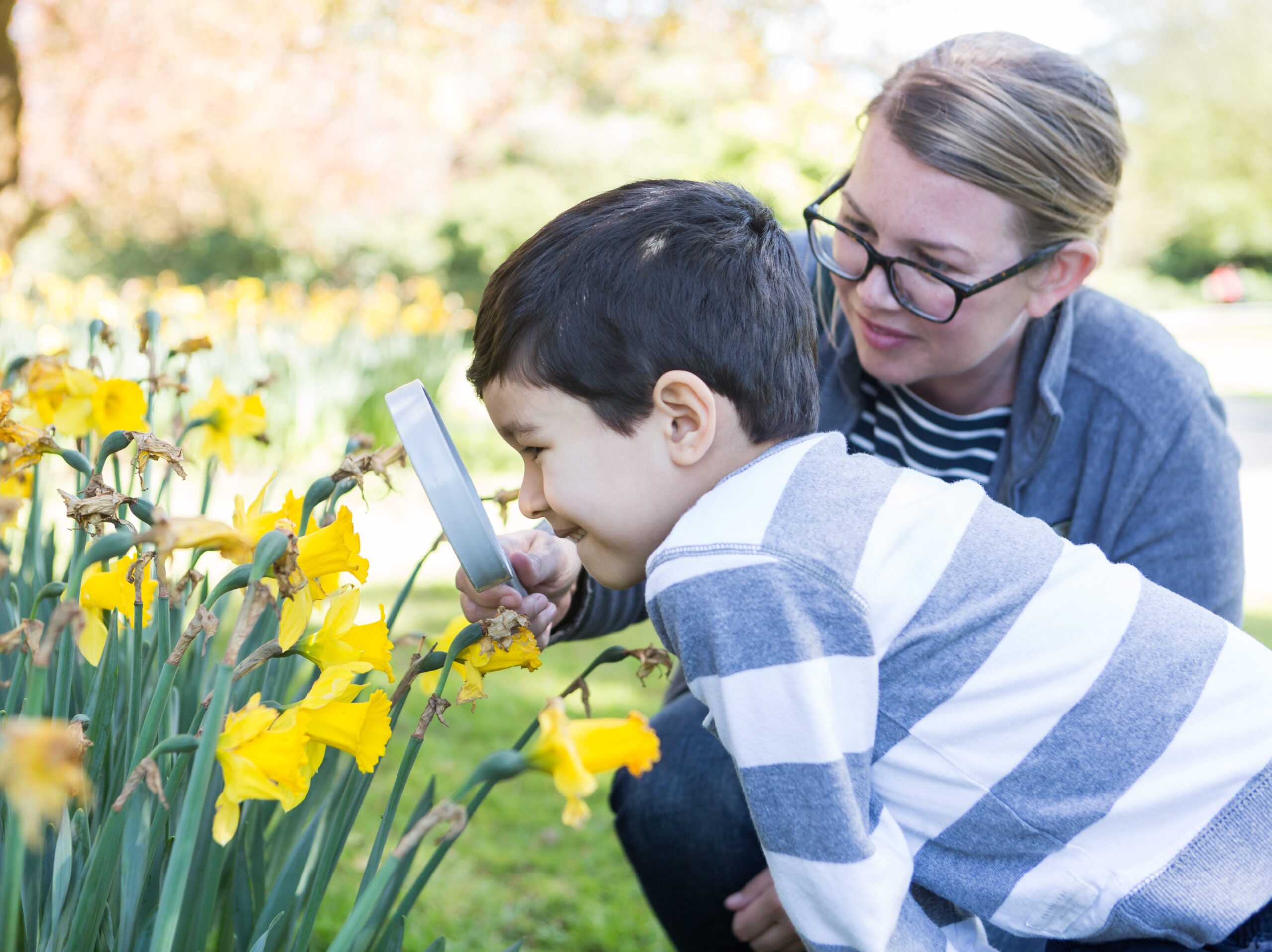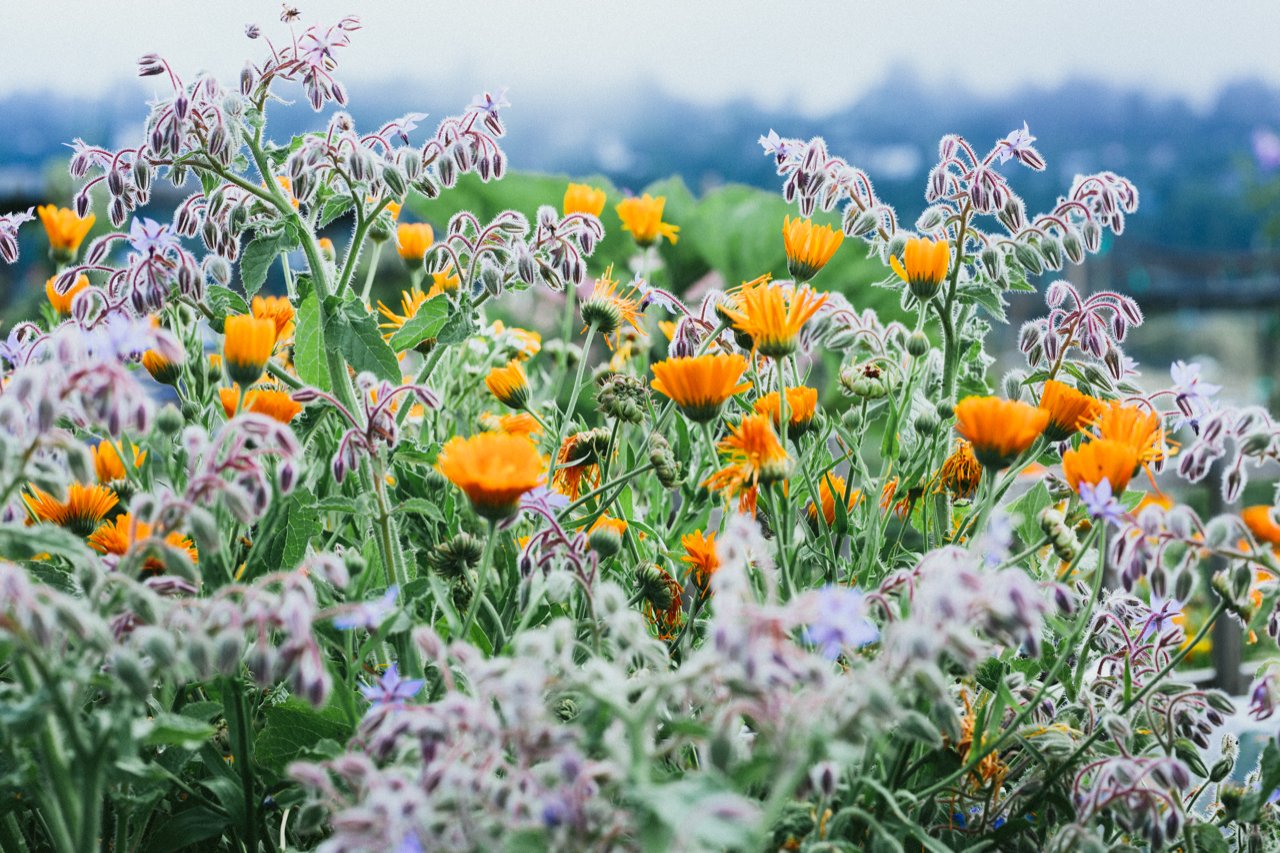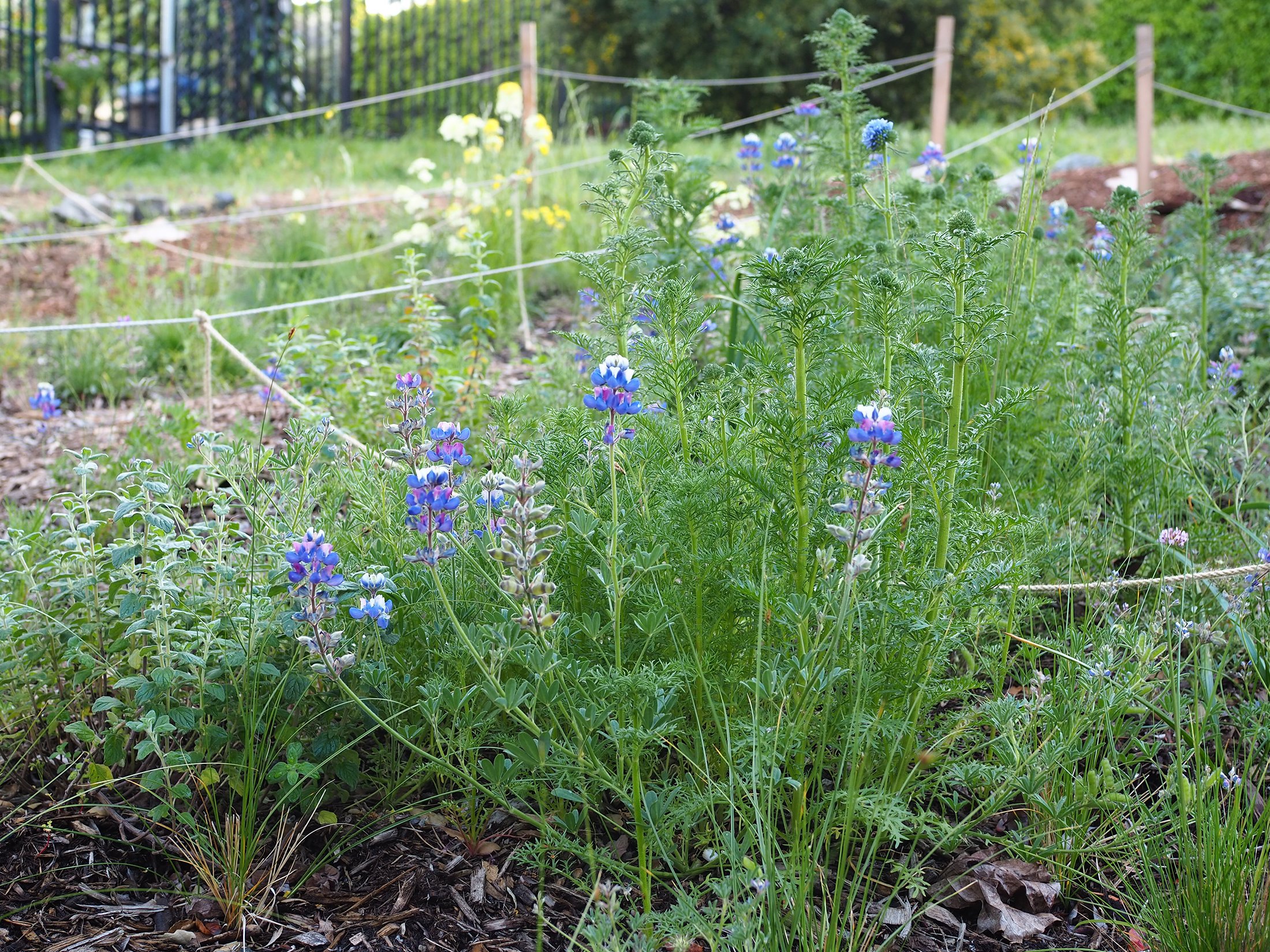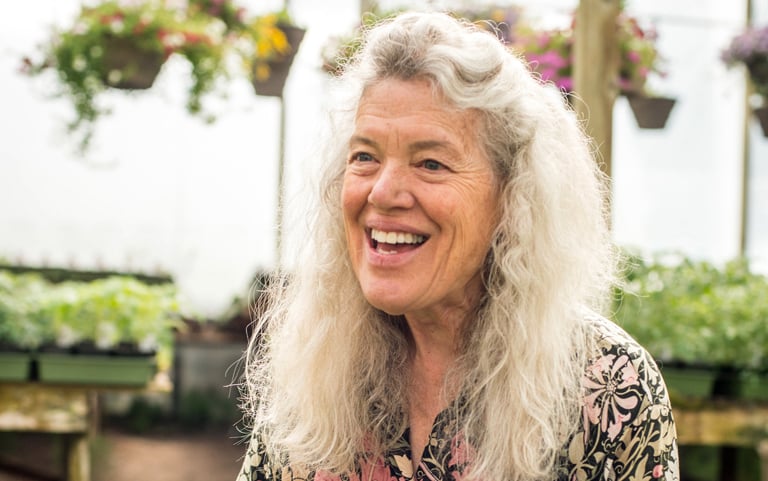

Contributor
- Topics: Archive

I like to think of my front yard as my little patch of solace. Alpine strawberries (Fragaria vesca) drape the pathway with dark green leaves and arching, flowering stems. The berries ripen quickly in the warmth. Their scent, surprisingly potent for such a tiny fruit, reminds me to grab a handful while gathering the mail before they’re unwittingly squashed beneath the boots of the mailman and turned into a watery compote, leaving behind a fragrant red stain as the only evidence. Other than the occasional strawberry massacre, it is a beautiful entrance. Although I rarely use the front door, opting for the back door as most folks seem to do.
My front garden solace is possible because of the simple driftwood fence that keeps my dogs out. This is my space up front. Untouched, except when I touch it. No dog trampling or toilet use. Where I go when I want to kneel down with glorious abandon, fearless of anything ungodly on my knees or shoes, and just dig.

My plot—just 80 by 30 feet—is densely planted with a wild, tangled menagerie of annuals and perennials. Roses, borage, mint, chamomile, and California poppies flower from spring through fall, offering their lovely colors and scents. In the fall and winter, I enjoy sprawling honeysuckle and jasmine vines that flower sporadically, probably confused by our changing coastal climate.

A fragrant path of herbal groundcover runs from the driveway to the mailbox. It’s mostly chamomile (Matricaria chamomilla) flattened completely from years of being walked on into a wonderfully thick green carpet, but pockets of thyme and mint (Mentha ×piperita) have crept in, as they will do. They mingle with the lavenders (Lavandula ×intermedia ‘Grosso’ and L. angustifolia ‘Munstead’) and when you walk the path to get the mail, the cuffs of your pants smell heavenly. While the entire unruly grouping is edible, I mostly use them to brew nice pots of hot tea each day. As a gardener, I believe growing herbs for tea—and all sorts of edibles—is essential. I’m convinced herbs were a gift from the gods—easy, drought-tolerant, and low-maintenance functional plants that look good. Even when not in bloom, they are pleasing to see, touch, and smell.

[sidebar]Harvesting & Brewing:
• Harvest fresh herbs immediately before brewing.
• Gently rinse off any compost or soil with cool water.
• Fold leaves or stems into a bundle and place into teapot.
• Bring fresh water to a boil and let sit for a few seconds, and then pour water into teapot.
• Let steep from one to seven minutes depending on how strongly flavored you like your tea.[/sidebar]
Garden Favorites:
- Lavender (relaxing)
Pick three stems of lavender (include flowers and foliage). Perennial, full sun; grow in containers or in the ground.
- Chamomile (tummy-soothing)
Snip two tablespoons of chamomile for one to two cups of hot tea. Annual, sun to part sun; grow in the ground.
- Mint (digestive, refreshing)

Clip several young sprigs—fabulous iced as well. Perennial, sun to part shade; best grown in containers to control spread.
- Alpine Strawberry (fruity, sweet)
A less obvious plant for your tea garden. Pluck a few fully ripened, dark red berries and steep in a cup of hot water. Perennial, sun to part shade; grow in a container or in the ground. Also consider brewing tea from lime leaves, lime peel, or rose hips.
- Holy Basil (anti-inflammatory, many healing properties)
A few leaves in a hot cup of water make a lovely mild tea with a peppery taste. Annual, sun; grow in a container or in the ground. In coastal areas, holy basil—just like regular basil—can be challenging to grow. Inland, holy basil thrives, and will produce more than enough leaves for a grand herbal tea party!

Jennifer Lee Segale is a horticulturist and propiretor of Garden Apothecary in Half Moon Bay, CA.
Share:
Social Media
Garden Futurist Podcast
Most Popular
Videos
Topics
Related Posts

January Showers Bring February flowers…
Fall 2022 It may not quite have the same ring to it as the old English proverb, but it has a lot more truth to

Healing Gardens
Spring 2022 Emily Murphy believes gardens hold the key to saving our health, our communities, and our planet. In her new book Grow Now Murphy

Your Keystone Plant Matrix with Garden Futurist Doug Tallamy
Spring 2022 Listen to the full Garden Futurist: Episode XIV podcast here. If you take Keystone plants out of your local food web, the food

A Botanical Force
Listening to Alice Doyle recount the origin stories of Log House Plants’ most popular introductions, educational campaigns, and innovative collections is a great way to










Responses